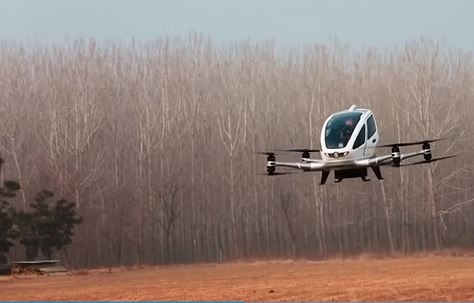- 23 February 2018
- Benny Har-Even
Welcome to the latest in our series of Visionary interviews with our key thinkers at the company. In this instalment, we spend some time with David Harold, VP of Marketing and Communications who has been with the company since the late ‘90s. Following on from our 25th-anniversary celebrations of last summer, and post the recent changes at Imagination after its sale to private equity company Canyon Bridge, we catch up with David who takes us through some key moments from the history of the company – where we are now, and to where we are heading.

David, you’re the VP of marketing and communications but let’s start with your background. Tell us a bit about your journey to get there.
I recall that in 1981 I was desperate for a personal computer. I got a Spectrum ZX81 and a RAM pack that plugged in the back of it. I recall ‘PCW Magazine’, where you’d type in an entire programme that was printed in the magazine. And then it wouldn’t work. Sometimes it was a typo, but sometimes they just genuinely didn’t work and you had to learn to fix it. Amazing.
I used to go into a Radio Shack-type shop in the UK called Tandy. They had computers with games like Zork. They didn’t mind random school kids coming in on the way home and playing for half an hour until they got bored and shooed you off. Bless them! I guess it made the place look busy or something.
I was very interested in text-based adventure games. Most of these used two-word commands: “Go North,” “Look Up,” “Take Rock,” etc. However, with Infocom games, you could write in an entire sentence so for my computer studies O-Level, I wrote a full-sentence text parser. Unfortunately, it took up the entire 48K of memory. I quickly realised that I wasn’t the most efficient coder.
I liked writing though, and the first cheque I ever earned was in my mid-teens for writing a guide to Infocom’s Hitchhiker’s Guide to the Galaxy game for a magazine called Adventure. I did liberal arts degrees – literature and film and then creative writing. I initially wanted to go into advertising. I went to an agency to apply for a job as a copywriter, and at the end of the interview they said, “We don’t actually have any copywriting jobs.” Then they said, “We do own a PR agency. Would you like to work in PR?” so naturally I said, “Yes, I’ve always wanted to work in PR!” So on the way home I stopped in the library, (pre-Google), and looked up exactly what PR was. I started on the Monday.
Almost immediately I realised I was far more interested in the technologically-focused stuff than in the other things I was doing so I interviewed for three different technology PR agencies. Two of them requested a psychometric test and asked me to fill in an exam-like application. The third met me in a pub. I went to work for them.
One of my early clients was ATI Technologies, now part of AMD. It was focussed on graphics and video cards for the professional market and was late to get into 3D – VideoLogic and 3Dfx were running away with the market. I did some PR for VideoLogic and eventually went to work for it. VideoLogic became Imagination Technologies and I’ve been here ever since.
Do you game much these days?
Unfortunately, I don’t have a lot of time for gaming. I did buy Shadow of the Colossus, which just came out again for the PS4, which will make it the third time I’ve bought it because I bought PlayStation 2 and the PS3 remake too. I read a review that basically said, “It’ll only take you six hours and it’s the exact same game as before. If you’ve solved it twice already you don’t need to do it a third time.” I thought: “Yes! I know what to do and it’s not going to take me very long! Perfect. That’s my game.”
So you’ve been in this industry for over 25 years. You must have seen a lot of changes over that time. Could you pick out what you would say are some of the key milestones that have stayed with you?
Well, I tend to think in terms of products. When I started here the business had just won the SEGA Dreamcast deal. VideoLogic had been doing PC chips with NEC and SEGA had tapped NEC as a potential processor supplier for the Dreamcast, beating out 3Dfx. That was transformative. The technologies that we created for the Dreamcast then went into our next PC cards. We learned a lot about doing low power there. Some of our early video cards had ‘fake fans’ as in the fans worked but they were entirely unnecessary. We could have run with purely passive cooling but PC buyers would only buy a graphics card if it had a fan, otherwise believing that it was underpowered. This didn’t impact the Dreamcast though and we were able to do it without complicated fan systems. In fact, the first models were water cooled, although that turned out not to be cheaper than fans in the long run as it was a more bespoke solution. It was fascinating technology though and a great console.
The next big product that was important for me was a Dell Axim x50v, which belonged to a class of products called a PDA, which nobody even talks about anymore. It was the first mobile PowerVR device. It used a PowerVR-based Intel 2700G processor. It was essentially a ‘phablet’ before anyone ever conceptualised that. It made a big difference to us at the time, because initially when we said we were going to stop doing PC, console, and arcade and do mobile, people laughed at us. I vividly remember a colleague from a competitor saying to me, “’Bye, I guess we’ll never hear from you again!” It might have seemed true for a few years as we went fairly quiet, but then the x50v came along and proved, to everyone that mobile graphics was a thing. The demos of Tomb Raider running on mobile devices made people think, “oh, maybe this stuff is real!”
Not long after that, there was the Nokia N95. It was an important product as a lot of people bought one and it was mobile and it had a GPU inside, so it had gaming capability. Suddenly, you went from Snake to relatively visually interesting games, such as football games or whatever.
Then, in 2007 we got the iPhone. It was a big leap – literally, game-changing. People suddenly realised that mobile graphics were important, it wasn’t ‘just games’, it was the whole UI. Now we were the only credible game in town too – the only GPU that was genuinely low power enough to put into these mobile devices.
We did lots of other stuff too –high-end PC sound cards and the first consumer 5.1 audio speaker systems. Then through that, we got into DAB digital radio, of which I’m proud for two reasons. In the years immediately before we did DAB radios the category was barely a blip and was declining – it was going to die. That’s why the solution we brought out was a bit of a Hail Mary for the industry. Suddenly you could have digital radio first for £300, and then for £100. It saved that market.
Those were major highlights. Are there any disappointments or dead-ends that you recall?
There are two that stand out for me. The first really is that we ceased doing PC graphics as our lead customer at the time decided to get out of the market. We actually had a full next-generation Kyro III product done and dusted, but it never saw the light of day. It made me sad to have it sitting in the lab and never ship.
The other disappointment was mobile TV. It was a bit of a disaster market if truth be told. It had such promise though. It was inherently related to the DAB digital radio standards and seemed like a great opportunity. Ultimately, it was a cultural failure rather than a technology failure. The only countries where it has become successful were South Korea and Japan where you could receive mobile TV signals on the trains. People commuted a lot there by public transport so there was a real use case for it. In the UK, people drive a lot and in the US almost exclusively and you can’t watch TV while you drive. For those reasons it didn’t make it, which continues to sadden me, because we had a good solution.
If we move forward to today, Imagination has gone through some well-publicised changes recently. How would you say that Imagination is now ready to meet future challenges?
While you ask about future challenges I immediately go back into the past. I’d say the company has always had a survivor mindset. When we were doing PC graphics cards one analysis said there were 50 other companies competing with us but out of those barely any survive today in any form. In our early days, I can remember months where we did not know if we could keep the business going, but we survived.
The last couple of years have been difficult but we’ve gone through them in the exact same way as we did with earlier challenges, without ever questioning whether we were going to survive. It was never will we survive – the only question we asked ourselves was how, and in what form?
I think it’s been brave for the company to sell part of the business – that was not easy. A lot of companies hold onto things for too long. To remain as an independent IP company, which gives us the opportunity to do what we’re good at doing, was important. There was a possibility we could become an internal resource within some bigger company but that wouldn’t have been Imagination anymore, not in any real way. I think we’ve done the right things and in Canyon Bridge, we’re working with the right people.
How is the company moving forward now?
We go forward by creating new technology. We’re building out PowerVR so that it can address market areas where it was historically a bit weaker, and so it can offer customers the broadest kind of choices. We’ve got a new graphics architecture, Furian, and most importantly, an entirely new business unit area focusing on vision and AI. Adding the AI neural network processing side, with our variable precision architecture I think gives us a huge opportunity. We’ve ended up in a good space.
What would you say are the most exciting key technology developments right now?
Well, first of all, I don’t think the mobile revolution is over, by any means. People who look at this are saying, “The market is saturated. These devices are mature, and they do everything they could do.” No. Definitely no. There’s still an awful lot of interest and potential in mobile. For me, talking about the business and its opportunities I’m still very interested in AR and VR. I think AI is going to be an extremely pervasive technology. It going to add a huge amount of value to people’s lifestyles, just as mobile has done.
Electric cars and in-car electronic systems are incredibly exciting to me. The idea of autonomous driving: autonomous systems of various kinds. I would love to see flying transportation as well. Drones you can ride in, or flying cars, whatever you want to call them.

The knock on from those markets will be very important too – batteries in particular. I’m really excited by the potential of solar. In the future, it won’t be a boiler in your home or even a heat pump, but a battery, storing energy from solar that’s released over a long period of time. I think that’s brilliant, especially as some of those systems will be based on repurposed car batteries. I think that kind of thing is exciting.
The biggest thing that excites though overall is the cultural impact of technology. When the first mobile phones came through in the 80s many viewed anyone who had one as a bit of a jerk. Whereas now they are pervasive; they’re enriching people’s lives. People are now so accepting of what technology has done for them and could do for them. It’s transformative at every level of our culture. Technology is inherently neither good nor bad, it’s all about context; I think it is our duty to create contexts in which technology delivers a net positive benefit to society.
What would you say about Imagination’s specific technologies that make them a great fit to enable the future?
I don’t think that the answer to this question really comes down to something specific in our roadmap today. It actually comes down to being the kind of company that creates these sorts of products and roadmaps – it’s our openness to possibility. You can only innovate with an open mind. Whenever we come to a problem we say: “Here’s a blank piece of paper. Sod how anyone else has solved this problem before. What’s the best way of solving it?” Partly, we’re driven to do that by commercial imperative, because you cannot patent something that somebody else has already invented. You have to innovate and that goes right through the company and the culture.
Along with that, we have a philosophy that open standards matter. Even when sometimes it’s to our disadvantage as it means our customers could switch from us to a competitor, we still believe in it. We believe that open standards are the right approach.
Would you be brave enough to make predictions of where we could be in the next five years?
In some ways, five years is always too close in this business. The way we work, we come up with IP that’s going to take a year to licence to a customer, then a year for it to turn into a chip, then a year to turn it into a product, and a year to get to mass volume, so five years feels very close. However, in that timeframe, there are fascinating things that you can really see happening. The number of customers that we’ve picked up in the IoT space suggests it’s an area really starting to grow. Also, the amount of interest in neural network acceleration really suggests that combined visual and neural networking applications are coming through. I think those are definitely on that five-year horizon. Autonomous systems of various kinds fall into that five-year horizon; robo-taxis, autonomous drones and those types of things.
Personally, I’m far more interested in the further horizon. I’m fascinated by science-fictional views of the future. It’s interesting now to see so many people in our industry are driven by those same views and imperatives. There are many things that would not exist today if it hadn’t been for William Gibson making them up on a typewriter in 1984, particularly relating to the internet and how we think about the internet, virtual space and VR, AI, and all of those kinds of things, but also the thrill of hacking and defending against hackers. I think now we’re getting to the point where companies like SpaceX and Tesla are being driven by ideas from people like Iain M. Banks. The vision of a future; post-capitalism, post-scarcity, solar or even inter-solar societies where people are free to do what they want because they don’t have to work unless work is what they want to do. There are people who are now thinking, “how can we get closer to that future?”
There are conversations about what the impact of AI and robotics might be and their potential to cause job losses. My general feeling is that just as we in the UK became more a service-led economy as our industrial economy declined, we will change and adapt again. In fact, I think ultimately there’s a possibility that AI and robotics will open us up to that next big positive shift in what we do and why we do it.
Many refer to this as the fourth industrial revolution. I think there’s huge potential there. Some are asking questions about where the government will get its money – can we tax robots, or rather the organisations that run them, if we can’t tax working people?
I think these are the wrong questions.
If we have all this productivity that comes out of robotics and AI then what does that free people up to do? If we have this free labour, what can it create for us? How can it change the wider society? How can everyone benefit, not just a set of corporate owners? What we need to do is think about where this technology will take us next as a society.






